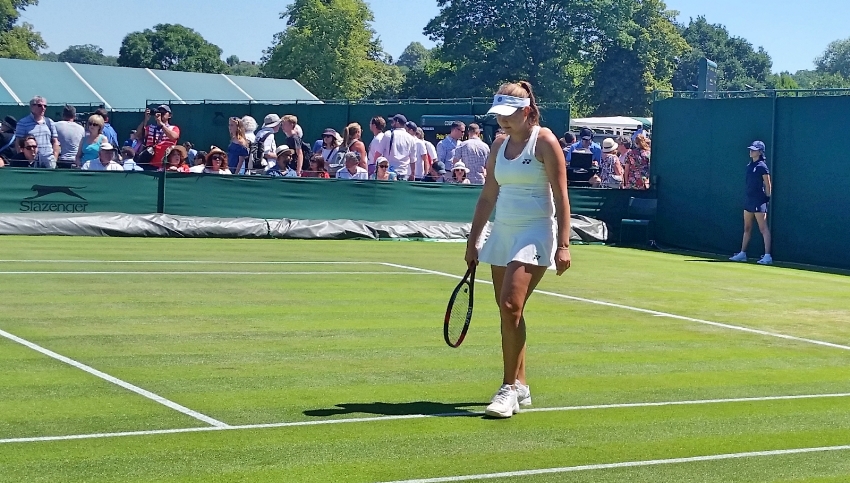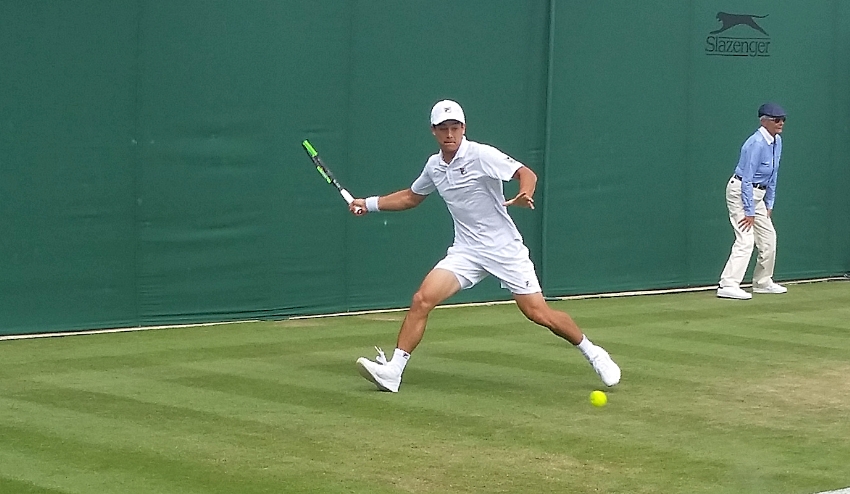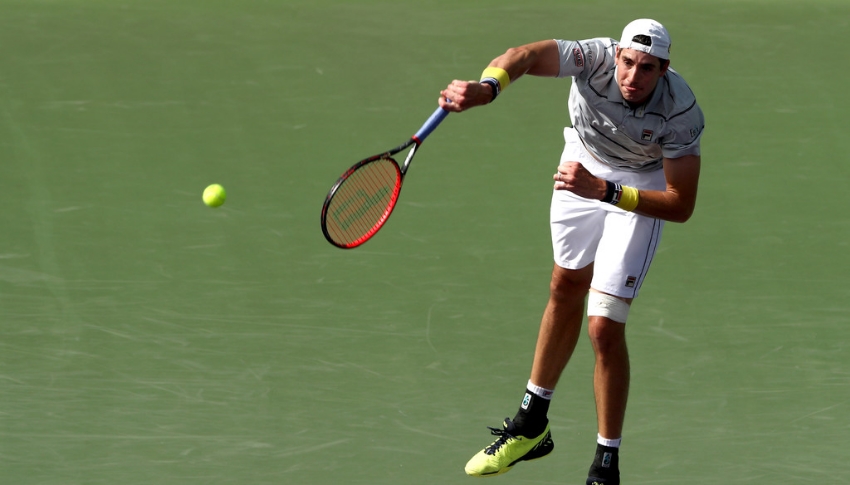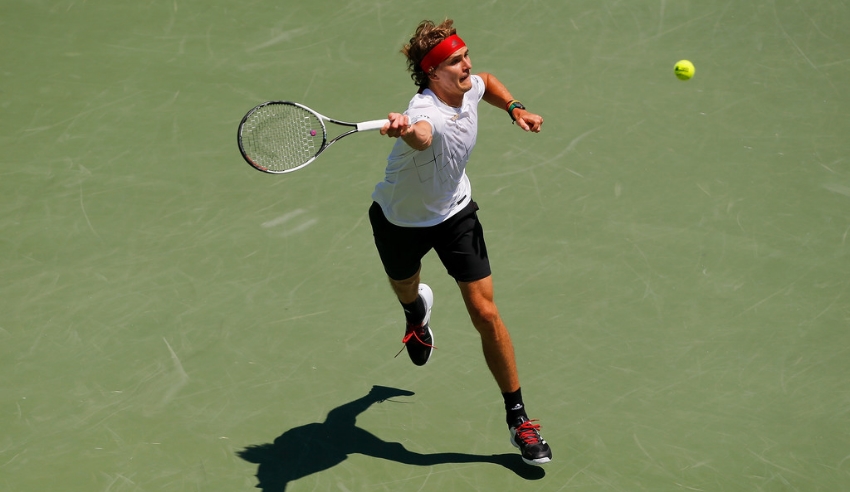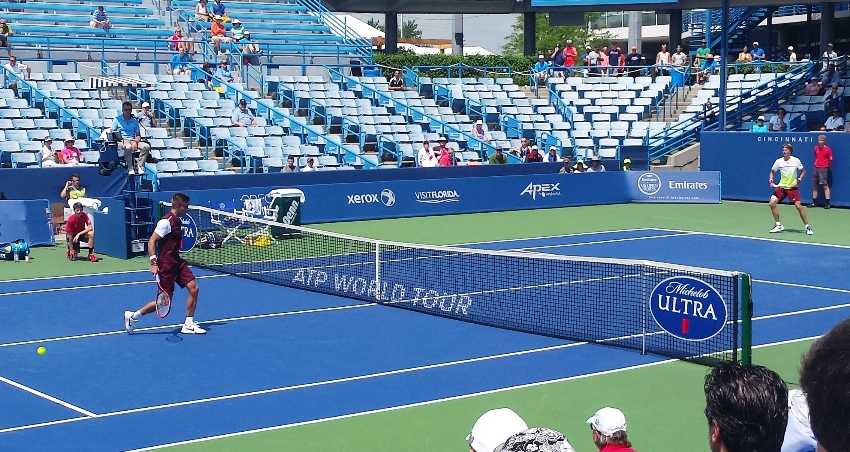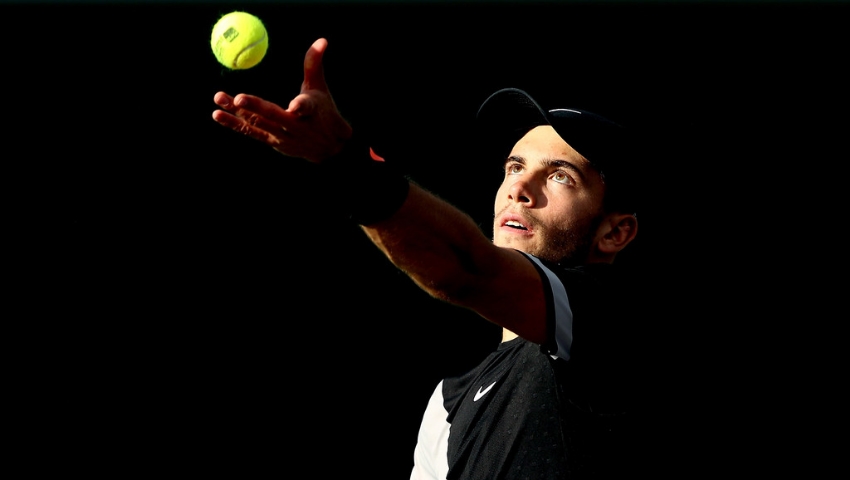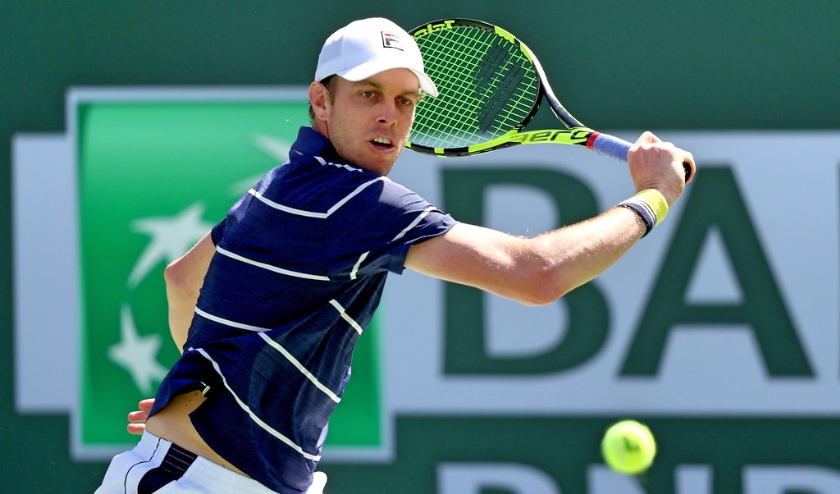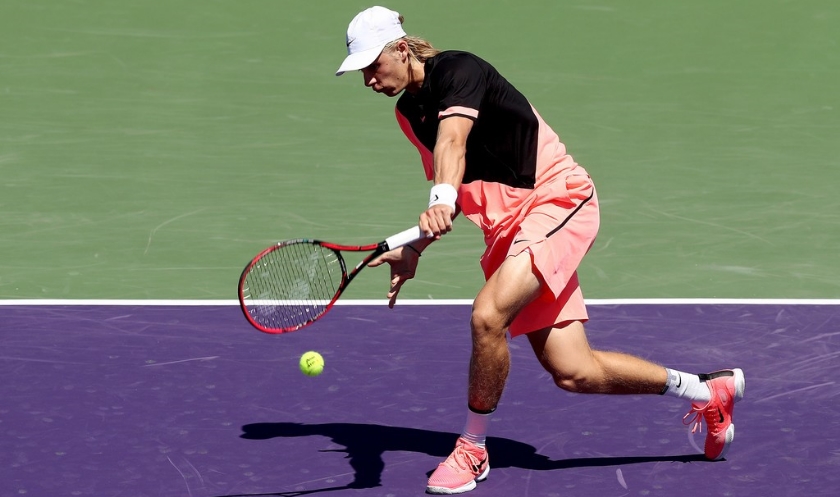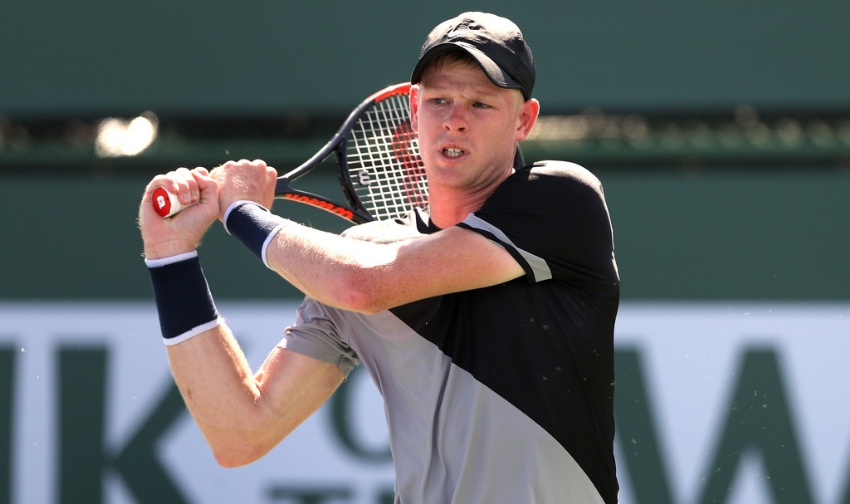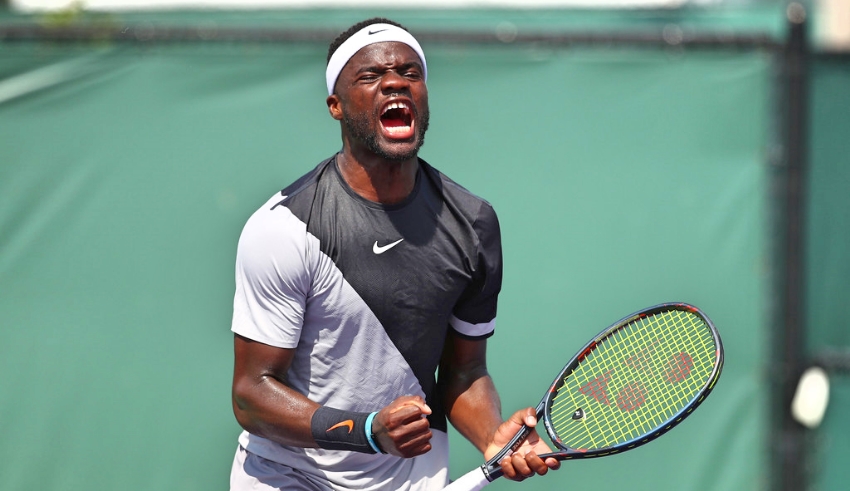Wimbledon’s 2018 edition has been marked by stunning upsets and we have only completed four days of competition. Six out of the top 8 seeds on the women’s side, including names like Garbine Muguruza, Caroline Wozniacki, and Petra Kvitova, and three out of the top 8 seeds on the men’s side (possibly four with Alexander Zverev’s match suspended at two sets to one down), have all temporarily changed their status from competitors to tourists in London.
While you will find plenty written on the seeded-player debacle in the tennis media, you will not find any on two names that got lost in the shuffle, probably much to their liking. Most casual tennis fans probably never heard of them, and yet here they are, quietly waiting for their third-round matches. First, let me describe the type of players that I want to tackle in this piece.
These players neither have flashy styles, nor fan followings. They are often overshadowed by spectacular shot-makers with physical presences or flair on the court, or by ones that possess a certain type of character on the court that fans deem “worthy of watching” (yes, such approach exists indeed). They do not possess a big weapon in terms of stroke production. Instead, they rely on either their shrewd on-court-decision-making skills, or on their resolve during critical moments, or on their dependable footwork and fighting spirit, or on their endurance, or on a combination of any of the above.
History of our sport is filled with them although you would have a tough time getting any expert to name 10 of them right off the bat. For example, do you remember Rainer Schuttler (if you are old enough)? The German turned pro in 1995, and steadily rose through the rankings, finishing 332 in 1996, 117 in 1997, entering the top 100 in the beginning of 1999, reaching top 50 later that same year, getting to no.40 in 2001, finishing 2002 at number 33, rising all the way to number 6 by the end of 2003, and reaching the finals of the Australian Open in that same year.
It was a slow but steady rise, with no fanfare. Hardly anyone recognized him if they passed him by in the street or even at tournaments. He remained in the top 10 for one more year and top 50 for a few more, managing to reach the semis of Wimbledon in 2008 as his last big hurray.
Why such little recognition for the man who was, in reality, one of the most admired work horses of his time by his peers? Because, he was the type of player that I mentioned above. He neither had the flashy personality nor the game to garner attention. He had no big weapons – for example, his second serve was considered a weakness and he hit no one out of the court, so to speak. He was also ice-like on the court, showing very little emotion.
Schuttler was simply a good athlete who worked hard and offered no gifts to his opponents. He was the ultimate overachiever against a pool of superiorly talented players during his era, simply because he was a mental rock who would feel to his opponents like that chewing gum feels to you when it gets stuck in your hair and you can’t get it out no matter how hard you try.
Now back to Wimbledon…
There are two of “those” players here, one in each draw and both ranked outside the top 100.
Evgeniya Rodina, a qualifier currently ranked 120 in the WTA, and MacKenzie McDonald, ranked 103 in the ATP, are quietly – and efficiently – having their best show in the Majors. Rodina has matched her third-round appearance at Wimbledon from 10 years ago and McDonald is at his first ever third round in a Major.
If you are a casual tennis fan and you have never heard of them, you are not alone.
On the one hand, they are riding in somewhat different boats in terms of their overall careers. 29-year-old Rodina has been around a long time, but the Russian’s highest ranking was no.74 in 2011, and she has yet to earn a WTA title (she did win a WTA 125K series event in 2016). McDonald, for his part, is a newcomer who turned pro two years ago. The American is 23 years old.
On the other hand, they have plenty in common. They are both astute thinkers on the court and fierce competitors. Although they are limited by their sizes and lack of power, they are skilled at fabricating formulas to get the job done. They don’t hit dozens of winners or blow the opponent off the court. They are not natural shot makers. Yet, both are planning to play their third-round matches on Friday while renowned names have been sent packing, along with their previous-round opponents who had superior talent and skills in comparison to them, at least on paper.
I wrote in detail about Rodina’s first-round win over the more talented Antonia Lottner two days ago and if you read it, you probably understand why I chose the title is “Rodina ‘finds a way,’ again!”
Her comeback win in three sets against Lottner was the product of a never-die attitude, backed by her willingness to do whatever’s necessary to turn the tide around. I will not repeat the details of that win, you can find them in my recap from two days ago. It was her fourth win in one week, having come from the qualifying draw, and a reprint of the script that she has been writing on many occasions for years.
So was the case in her second-round match against Sorana Cirstea, another skilled performer with much more potential in terms of shot production than her. Rodina again “found a way” to turn around what appeared to be a lost cause after the first hour of the match.
After Cirstea dominated the first set 6-1, Rodina began to steady the ship early in the second. She held serve four times in a row to get to 4-3 up in the second set. At 15-15 on Cirstea’s service game, Rodina hit a return winner and followed that up with another sharp cross-court return that forced Cirstea into an error to earn two break-point opportunities at 15-40. On her second opportunity at 30-40, she struck another return deep into Cirstea’s deuce corner. The Romanian barely got it back and Rodina nailed her backhand for a winner to the open court.
Mind you, this was not the way Rodina had planned her comeback, i.e. hitting winners. It is not in her pedigree to win matches solely on direct hits. The two winners in that 4-3 game were only her second and third winners of the set. She finished the set with only three winners!
The bottom line is this: Rodina was willing to step outside the box to get the job done! She was astute enough to realize that her moment had arrived and that she had to force the issue in order to finally take charge in the match. One break right then and there meant that she would serve for the set. She succeeded. She then held serve in the next game and pocketed the second set 6-3. Rodina made the hard decision when it mattered, and the match’s complexion changed in a matter of 5 minutes. She won it 6-3 in the third.
This is how this type of player wins matches. You do not necessarily see it in the stats because stats do not reflect mental fortitude in delicate moments. One telling stat (somewhat) is that Rodina hit 14 winners to Cirstea’s 25, but she only made 7 unforced errors to Cirstea’s 35. Unspectacular, yet efficient, much like her victory against Lottner.
Rodina managed to overcome two athletically superior players, with clearly more firepower potential than her, thanks to her high IQ and competitive spirit. It’s your emblematic, underrated overachiever, having a gritty day at the office, tackling challenges and solving problems with no fanfare.
Much like McDonald on the men’s side.
The American does not have an overpowering serve or forehand. He is a good athlete with quick hands but stands way clear of the over-six-foot range that tennis seems to demand from its top male prospects. His best shot is his return, which comes in handy when he plays doubles, or when he plays a big server like Nicolas Jarry, whom he defeated 11-9 in the fifth set after three hours and 31 minutes in a workman-like performance to reach the third round.
Jarry was without a doubt the more talented player with bigger shots. He was also several inches taller than McDonald. When they stood at the net together, it resembled the second coming of Dudi Sela vs Ivo Karlovic (ok, not that bad, I exaggerated). Jarry did begin the match with a bunch of winners, building a 4-1 lead on McDonald. The Californian remained calm and worked his way back into the match, thanks to some remarkable returns once he got the feel of Jarry’s serves. I will summarize the meat of what happened in one paragraph.
McDonald won a set in which he came within two points of losing twice (4-5, deuce, and 4-5 down in the tiebreaker), produced only six winners to Jarry’s 24, and appeared to be outclassed by the Chilean for the most part. He did so because he stood tall in points like 5-4 30-30, or 5-4 in the tiebreaker. Jarry, required to produce bigger shots and more of them, was the one to err first, including the forehand volley missed in the net that put McDonald up one set to zero (7-6).
It was a crucial set because for another hour and a half after that, his opponent dominated again. Jarry took the second and third sets to go up two sets to one. McDonald recovered in the fourth thanks to an early break and steadied the ship enough to get to extra time in the fifth. With no tiebreaker on the horizon, Jarry cracked first at 9-9 and lost the match in which he recorded 103 winners (including 24 aces) vs. 26 for McDonald, a match that he dominated for a good two and a half hours out of three and a half.
And that was after McDonald defeated the experienced Ricardas Berankis in the first round in four sets, in a similar fashion on Monday. Berankis held a set point to go up two sets to love at 6-5 in the second but he missed the return. On every important point, once again, McDonald stood tall. From the set point saved until the end of the tiebreaker which went his way to equalize the match at one set each, McDonald made only one unforced error, despite some rockets fired at him by Berankis from the baseline.
Again, the numbers will not tell you the story. Berankis produced twice the number of winners that McDonald produced, 14 to 7, in that second set. The unforced-error count was not in McDonald’s favor by much either (16 to 14). The total-points-won category was almost head-to-head (46 to 45). The difference was that McDonald buckled down and gave no gifts on the points that mattered the most. Berankis hit twenty more winners than McDonald, and he lost. McDonald got the job done!
This is repeatedly the pattern with which overachievers such as Rodina and McDonald are able to compete against better talent. Most casual spectators do not notice them, nor watch them much. But coaches adore them. Martin Blackman, the General Manager of USTA Player Development was present on the sideline during McDonald’s five-set victory over Jarry from the first game to the last. I did not ask him, but I assure you he was elated. Compared to coaching talented players who “almost” achieve great things, coaching players like McDonald and Rodina is a heavenly experience.
These overachievers deserve to get their due credit for their achievements, but they usually don’t. Whether it is because they will never get to the elite level – they simply do not have that kind of talent – or because their games are not breathtaking, it is hard to say. I am not even sure if that matters. I would venture to say that these players are not in pursuit of accolades. If they were, they would not last long because the constant disappointment would be exhausting. In my opinion, they bask in the reserved glory of knowing that they are able compete and make a living through their one passion in life.
But I will leave the examining of inner reasons aside and hail openly the likes of Schuttler, Rodina, and McDonald. Whether you care or not, you do not go completely unnoticed, unrecognized. There are those of us who see you!
Until next time…

